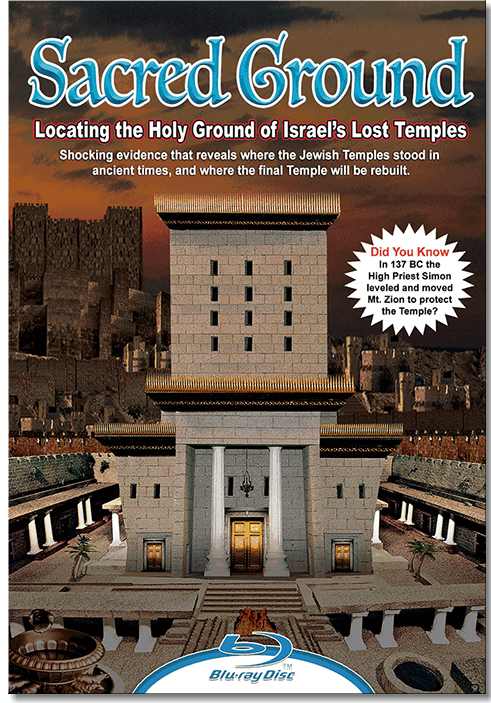The location of Temple's Sacred Ground in Jerusalem
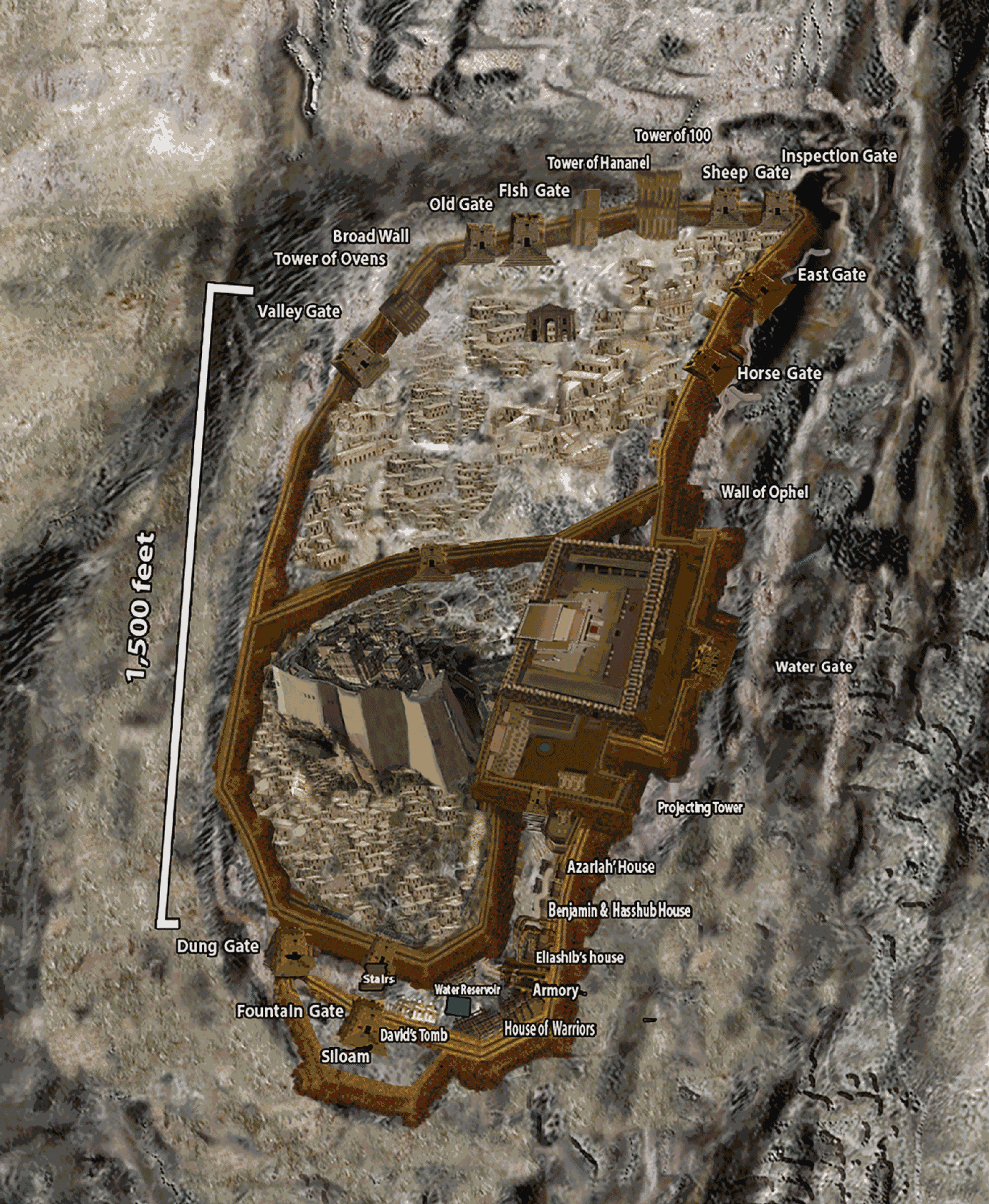
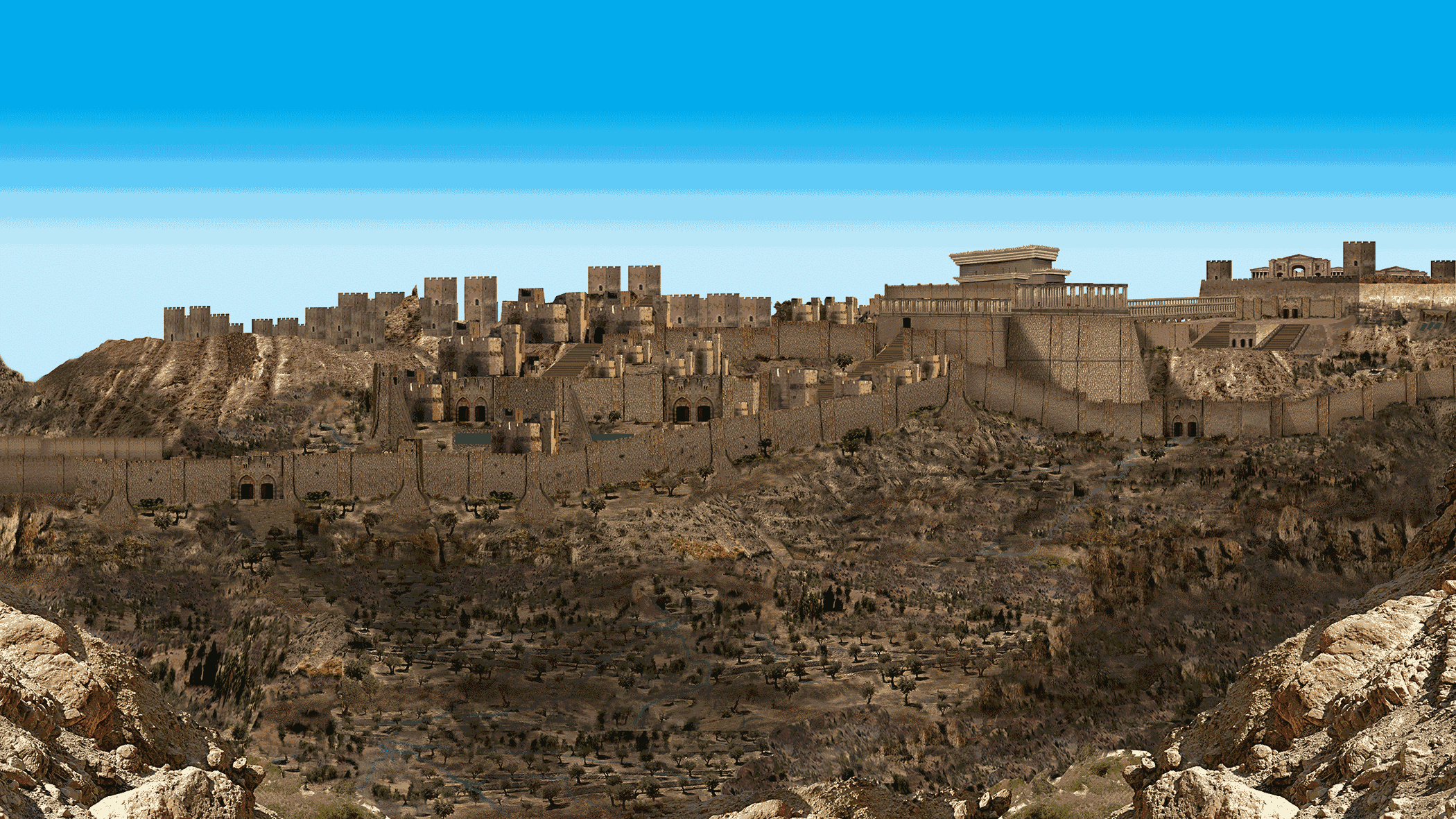

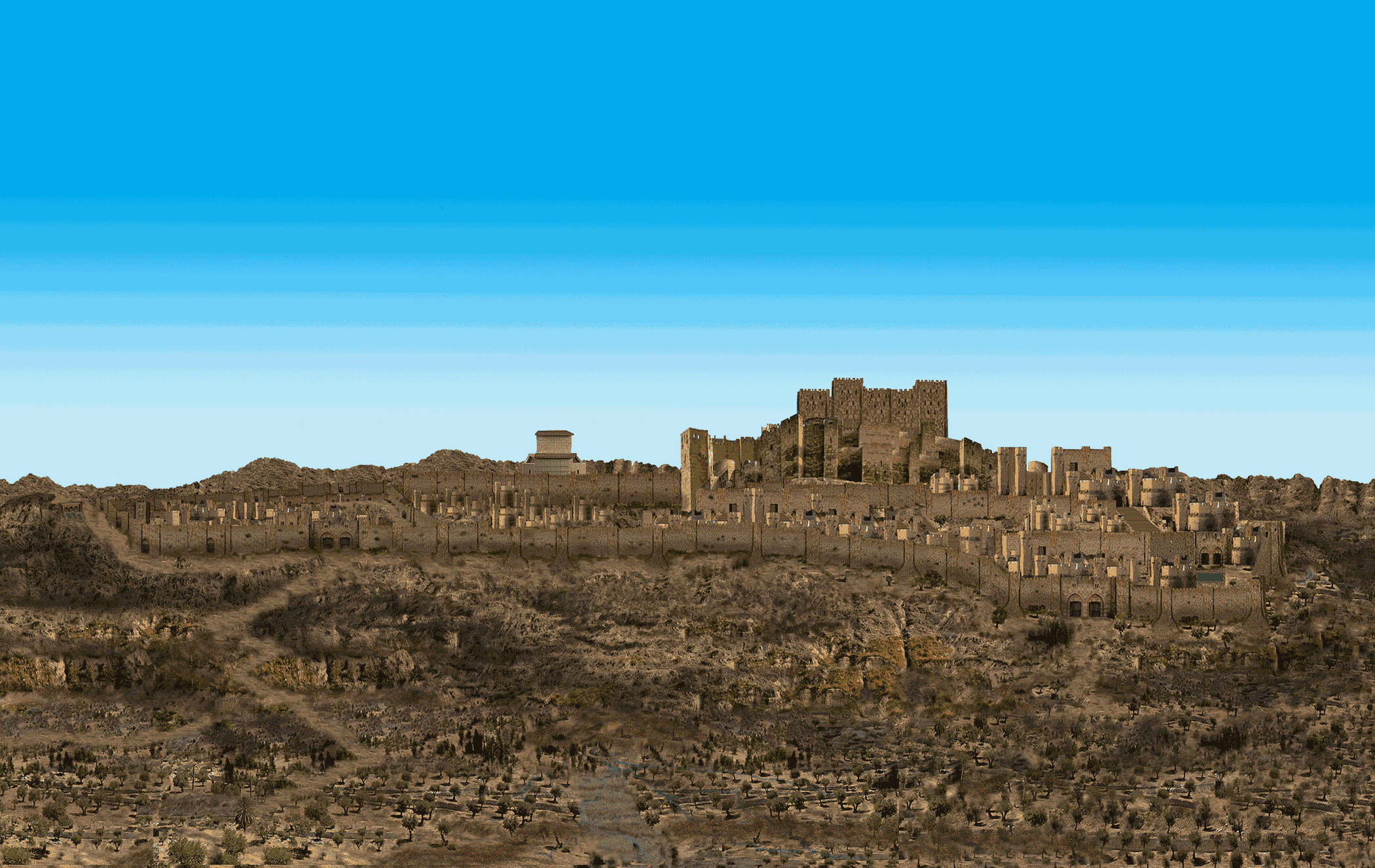
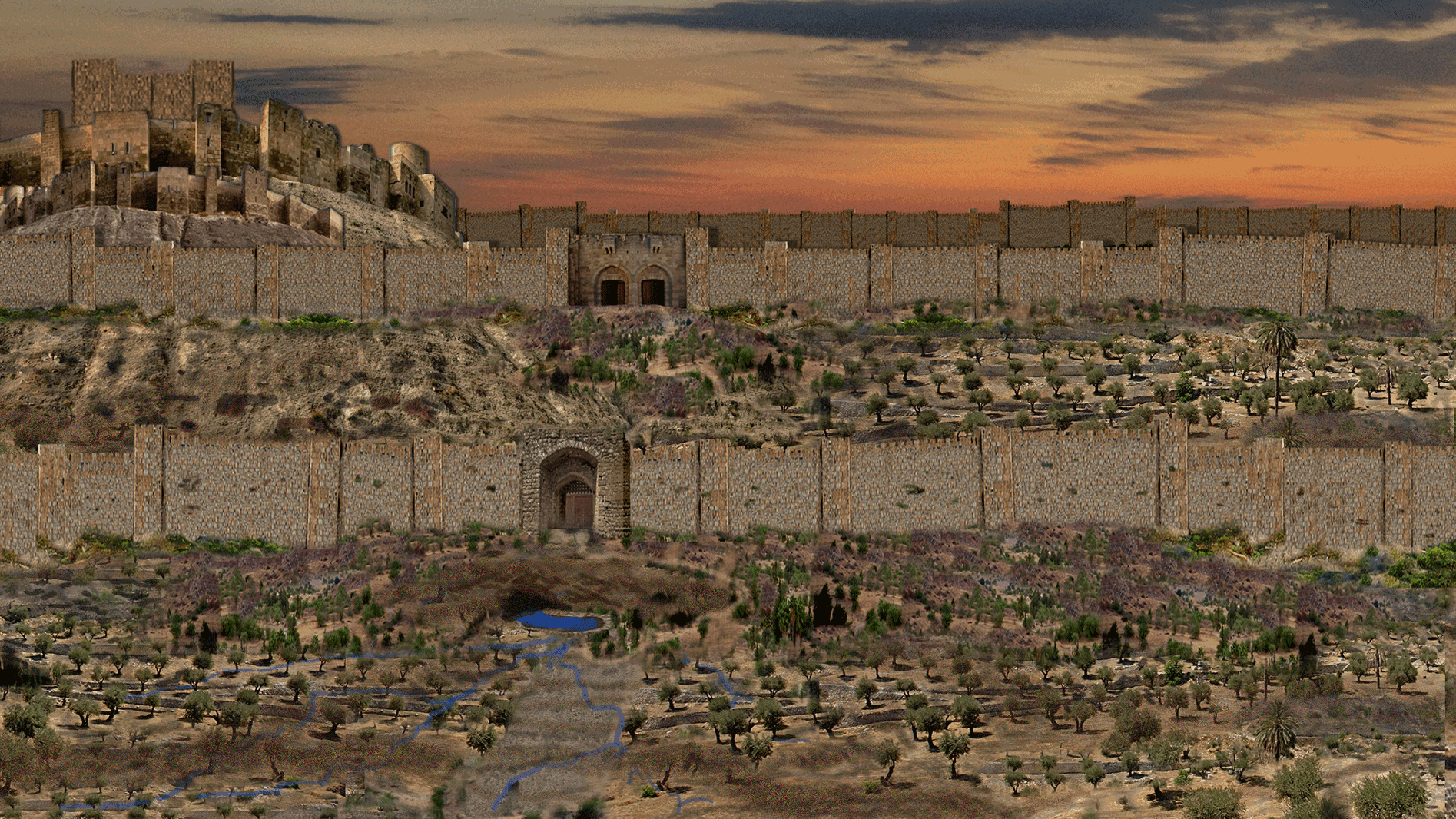

Nehemiah's Jerusalem Wall
Jerusalem at the time of King Herod
Solomon's Jerusalem and Temple
Jerusalem view from across the Tyropoeon Valley or "Valley of the Cheesemakers"
Jebus in King David's Time
1 - 5
<
>
Jebus in 1003 BC
Jerusalem in 959 BC
Jerusalem in 586 BC
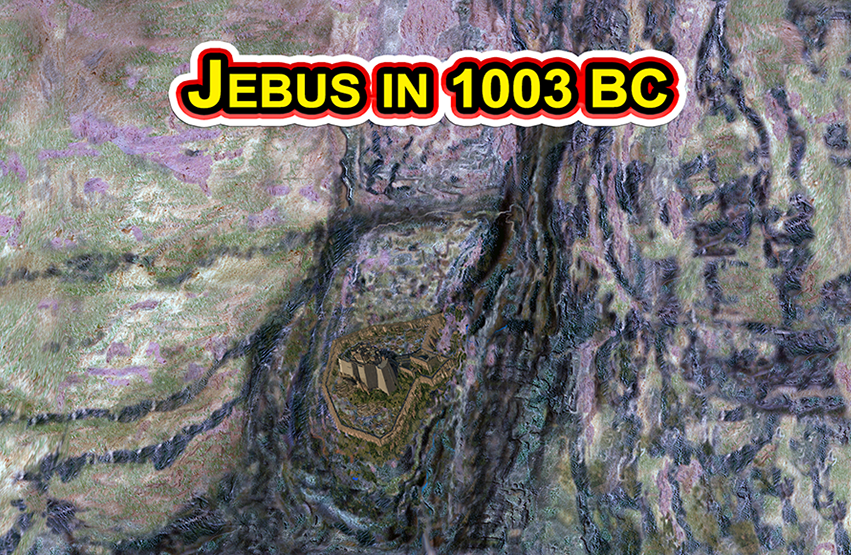
In 1003 BC Jerusalem was the Canaanite city of Jebus.
In 1003 BC Jebus or Jerusalem was a fortress, inhabited by Jebusites living high atop Mt. Zion, the tallest mountain in the area which had deep valleys protecting the city. The Jebusites were so confident that no one could breach the city walls, they shouted down insults at David and his men saying that even the blind and the lame could defend their city against him. An angry King David instructed his men to climb up a hidden water shaft to enter the fortress and defeat his enemies.
After capturing Jebus, David changed the name of the fortress to the City of David, and began enlarging his new capital.
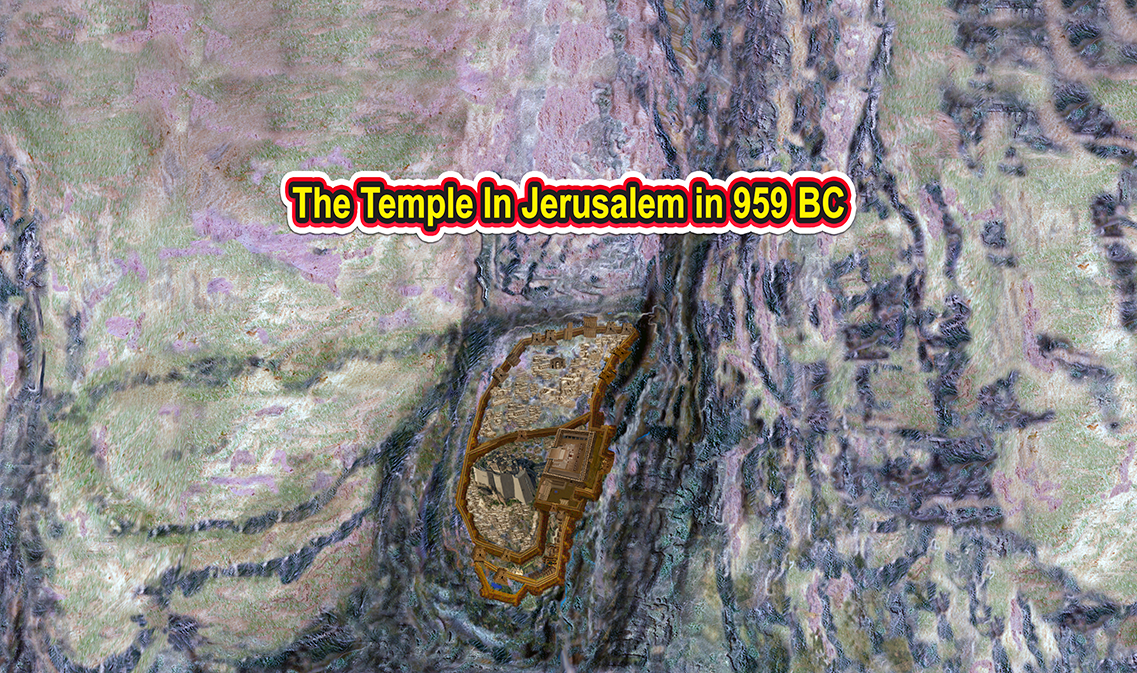
Jerusalem in 959 BC
In 966 BC, thirty-seven years after King David took control of Jebus, his son Solomon started construction on the first Temple. Seven years later, in 959 BC the first Jewish Temple was finished.
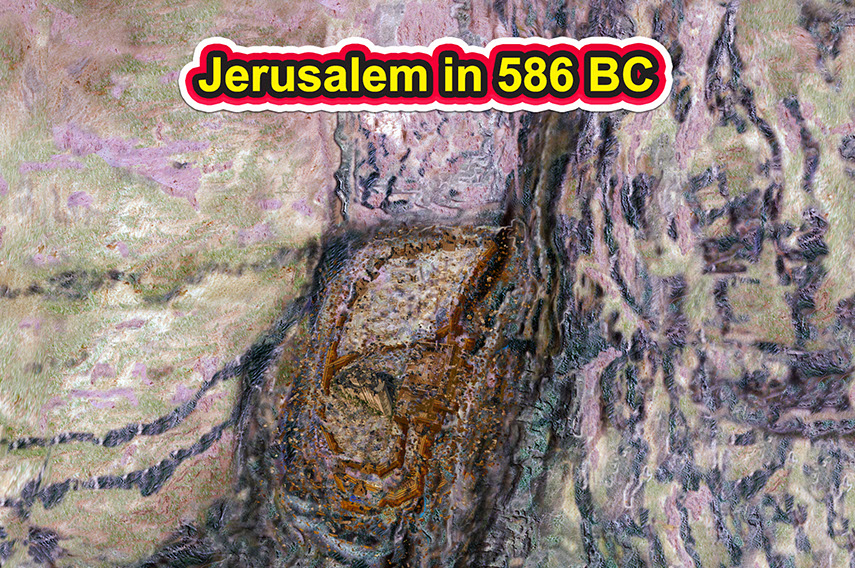
Jerusalem in 586 BC
In 586 BC, 371 years after Solomon first dedicated the Temple, the Babylonian King Nebuchadnezzar destroyed Jerusalem and burnt down the Temple.
Jerusalem in 516 BC
Jerusalem in 445 BC
Jerusalem in 134BC
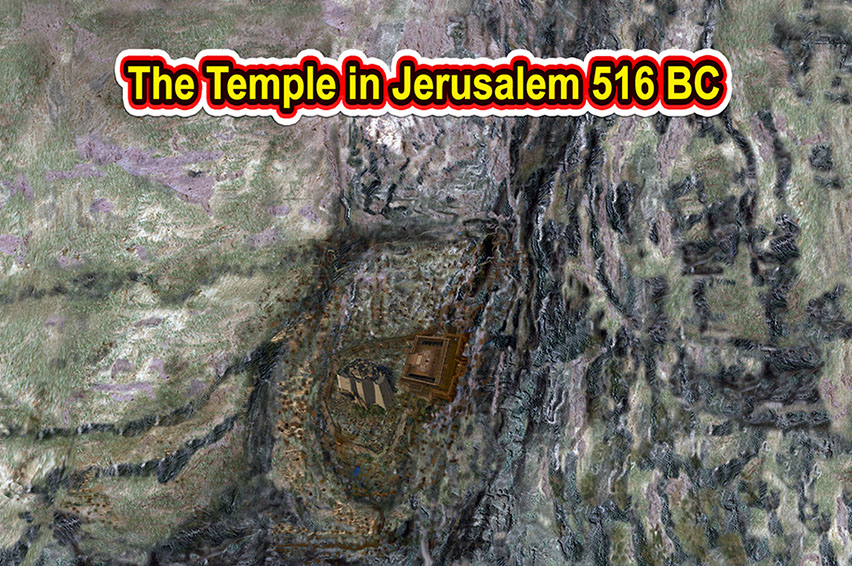
Jerusalem 539 - 516 BC
In 539 BC, forty-seven years after the destruction of the Temple, the Persian King Cyrus issued the order for Jews in his kingdom to return to Jerusalem and rebuild their Temple. The king’s degree included specific instructions for temple’s size and height, and that it was to be located upon the site of the former temple.
In 536 BC Jews returning back to Jerusalem started construction on the second Temple under the supervision of the Jewish prince Zerubbabel.
Twenty years later, in 516 BC, the second Temple is completed.
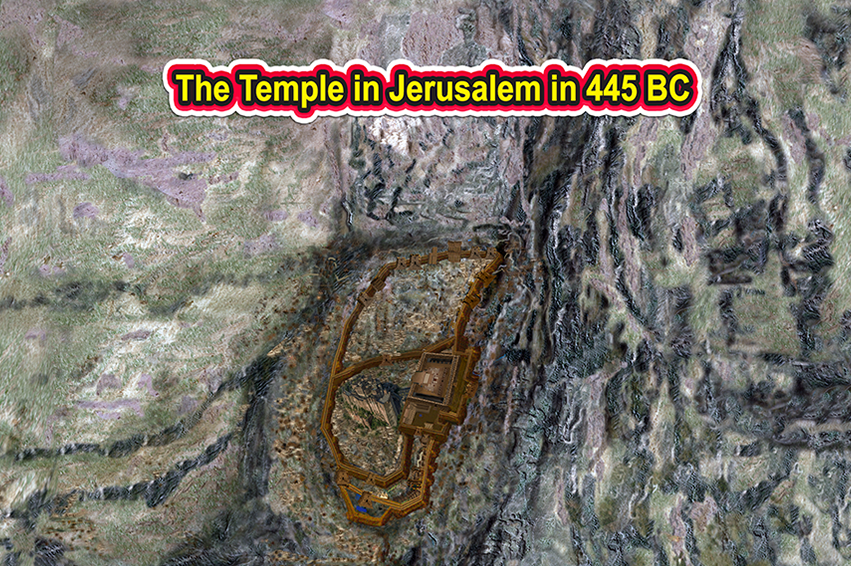
445 BC Nehemiah rebuilds the wall around the entire city
It took a long 71 years after Zerubbabel finished building the second temple for the Jewish priest Nehemiah to rebuilt the wall around in entire city of Jerusalem in 445 BC.
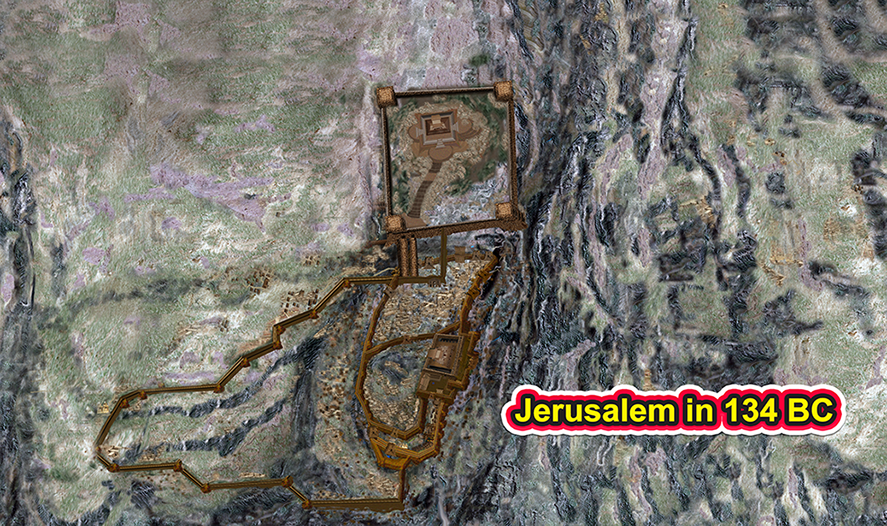
Jerusalem from 329 BC to 134 BC
In 329 BC the Greek King Alexander the Great conquered Jerusalem and the Greeks maintained control over the city until Judah Maccabee temporary ousted the Greek forces and established the first Hanukkah celebration in 164 BC.
Twenty-four years later, Judah’s brother, the high priest Simon Maccabee once again defeated the Greek army. The Greeks had recaptured the city and established a stronghold in King David’s citadel which towered over the temple complex. After vanquishing the Greeks from the Citadel, also known as the Acra, Simon decided that the only way to safe guard the Temple from foreign desecration again, was to destroy the Citadel, and level Mt. Zion. The high priest spent three long years working day and night to level Mt. Zion down to the bedrock, and filled up the valleys with fill from the mountain. Simon moved the city to the western side of the cheesemaker valley, thus enlarging Jerusalem’s overall footprint.
Sometime between 140 and 137 BC, the high priest also moved King David’s tomb to the new Mt. Zion on the eastern hillside.
In addition to moving Mt. Zion, Simon also build a new fort on the northern hill above the Temple which he named the Baris. Apparently, Baris was built to house Levite Temple guards and protect the Temple’s northern most flank from attack.
Jerusalem in 24 AD
Jerusalem in 70 AD
Jerusalem in 132 AD

Jerusalem 19 BC - 24 AD
Approximately 118 years after Simon razed Mt. ZIon and built the Baris fortress north of the Temple, Herod the Great began enlarging the Temple complex and rebuilt the sacred temple more in line with the height of Solomon’s original one. The Temple remodel began in 19 BC and took a total of 81 years to complete.
Besides enlarging the Temple complex, Herod also enlarged the Baris fortress, and re-named it the Fortress Antonia after his Roman friend Mark Anthony.
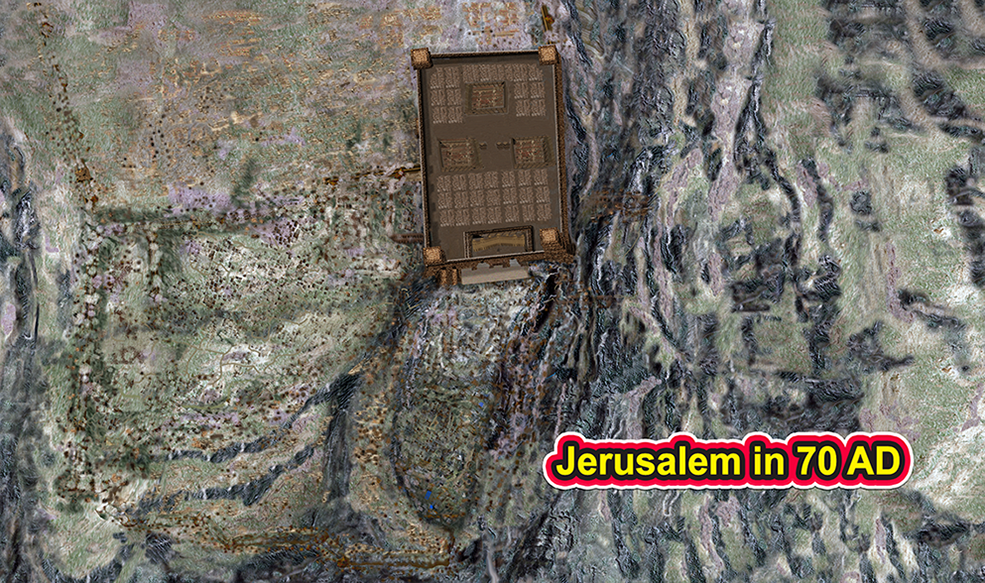
Jerusalem 70 AD
Eight years after the Temple renovation completion, the Roman General Titus burned down the Temple and the entire city of Jerusalem. Josephus reports the only thing the Romans left standing in the city was the fortress Antonia in 70 AD.
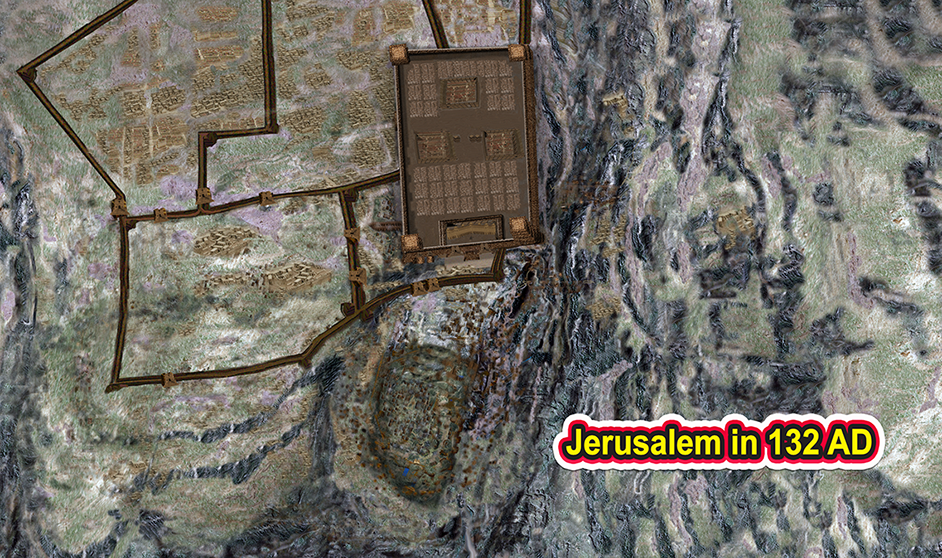
Jerusalem 132 AD
Fifty-two years after the destruction of the Temple (132 AD), the Roman Emperor Hadrian decided to rename Jerusalem Aelia, and made the Temple site a garbage dumb for his new Roman city.
Modern Jerusalem
Jerusalem with Nehemiah's Wall
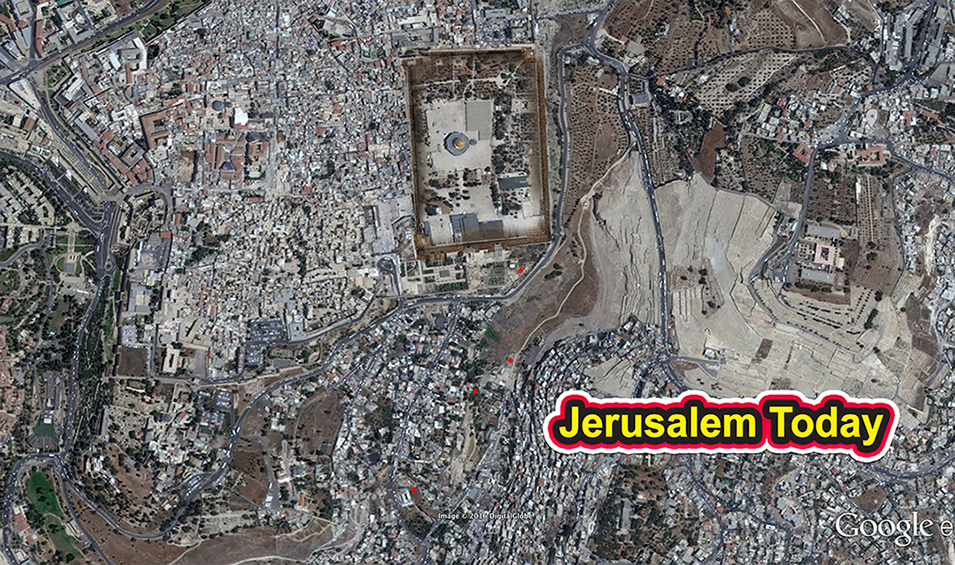
Modern Jerusalem
This image shows modern Jerusalem and the Temple Mount area, including the Western Wall, the Islamic Shrine the Dome of the Rock, and the Al Aqsa mosque.
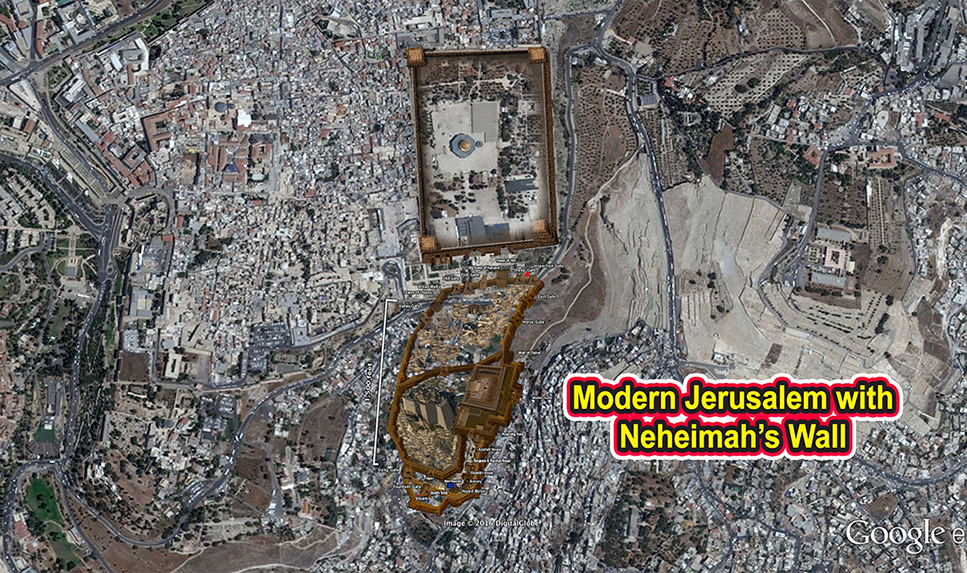
Modern day Jerusalem with a overlay of the ancient city described in Nehemiah.

Touch the dates in the bar above the maps to view the image of Jerusalem in that time period
Below is a video of the entire third chapter of Nehemiah describing Jerusalem in 445 BC.
Below is a short film identifying modern day Bible landmarks that point to the Temple ground location.
Here is a short film about the importance of the Gihon Spring and the Brazen Sea.
The film below shows the exact location of the Jewish Temples in the City of David as described in
Nehemiah 12:31-40.
Below is a brief film about the history of Jerusalem and the Temple.
